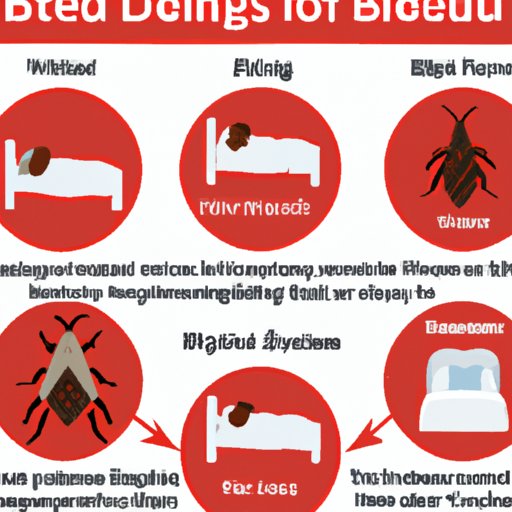Introduction
Bed bugs are small parasitic insects that feed on the blood of humans and other warm-blooded animals. They are found all over the world and have been a problem for centuries. While there are many potential causes of bed bug infestations, it is important to understand the different types of bed bugs and their life cycles in order to properly prevent and treat these pests.
Investigating the Different Types of Bed Bugs and their Causes
Bed bugs belong to the Cimicidae family and are divided into two main species: Cimex lectularius and Cimex hemipterus. The former is the most common and is found primarily in temperate climates, while the latter is more prevalent in tropical and subtropical regions. Both species feed on human blood, but the specific behaviors and life cycles of each species vary slightly.
Identifying the Different Species of Bed Bugs
Cimex lectularius, commonly known as the common bed bug, is the most widespread species of bed bug. It is reddish-brown in color and has a flattened oval shape. It is typically found in beds, mattresses, and furniture, and feeds on human blood at night. Cimex hemipterus, or the tropical bed bug, is smaller than the common bed bug and is usually found in warmer climates. It is light brown in color with a circular body shape, and prefers to feed during the day.
Exploring the Different Life Cycles of Bed Bugs
The life cycle of a bed bug is quite complex and depends on the species, environment, and availability of food sources. Generally, a bed bug will go through five stages of development: egg, nymph, adult, and mating. The eggs are laid by the female and hatch within a few days. Nymphs are immature bed bugs that molt several times before becoming adults. Adults mate and lay eggs, beginning the cycle again. Bed bugs can survive for up to 18 months without feeding.
Examining the Habits and Behaviours of Bed Bugs
Bed bugs are nocturnal creatures and prefer to feed on human blood during the night. They are attracted to body heat and carbon dioxide, so they will often hide in dark crevices near the host’s sleeping area. They are also capable of travelling long distances in search of food, making them difficult to eradicate once an infestation has occurred.

Examining the Environmental Factors that Contribute to Bed Bug Infestations
Bed bug infestations can be caused by a variety of environmental factors, such as poor hygiene and sanitation, clutter, and human contact. In addition, certain conditions can make a home or business more attractive to bed bugs, such as high humidity, inadequate ventilation, and lack of access to natural predators.
Discussing Common Misconceptions about Bed Bugs
Many people believe that bed bugs are only found in dirty or unkempt homes and businesses, but this is not true. Bed bugs can thrive in any environment, regardless of cleanliness. In addition, bed bugs do not discriminate between genders or ages, and can feed on anyone.
Analyzing the Role of Human Activity in Bed Bug Spread
Human activity can play a significant role in the spread of bed bugs. Bed bugs are adept hitchhikers and can easily travel from one place to another via clothes, luggage, furniture, and other items. They can also be spread through indirect contact, such as when a person touches an infested item and then touches a non-infested item.
Assessing the Impact of Bed Bugs on Human Health
Bed bugs pose a serious threat to human health. Their bites can cause itching, redness, and swelling, and may even lead to secondary bacterial infections. In addition, some people may experience allergic reactions to bed bug saliva, which can lead to difficulty breathing and anaphylactic shock.
Conclusion
In conclusion, bed bugs can be caused by a variety of environmental factors, including poor hygiene and sanitation, clutter, human contact, and certain conditions that make homes and businesses more attractive to them. Furthermore, human activity can play a significant role in the spread of bed bugs, and they can have a negative impact on human health. To prevent and treat bed bug infestations, it is important to identify the source of the infestation and take the necessary steps to eliminate them.


